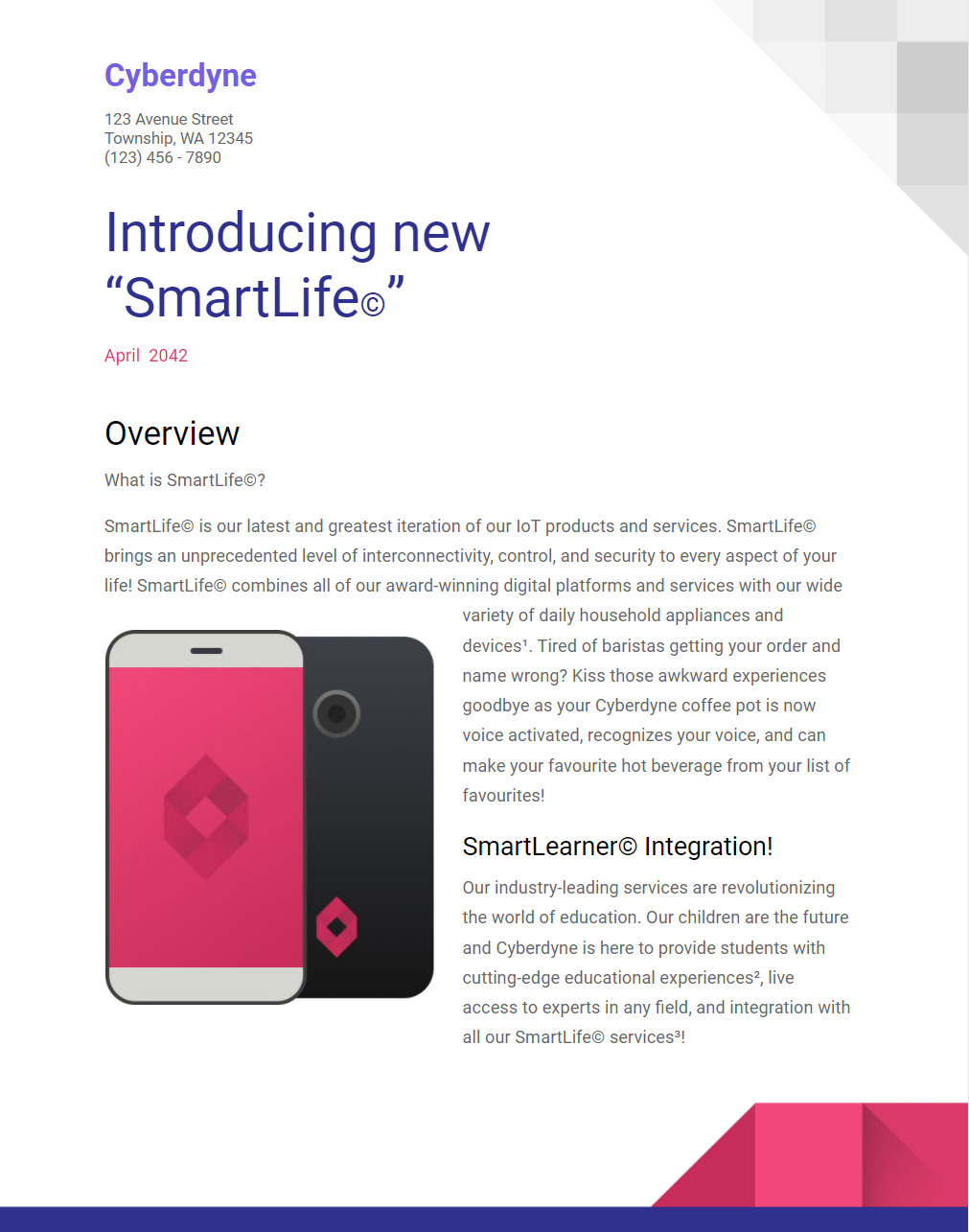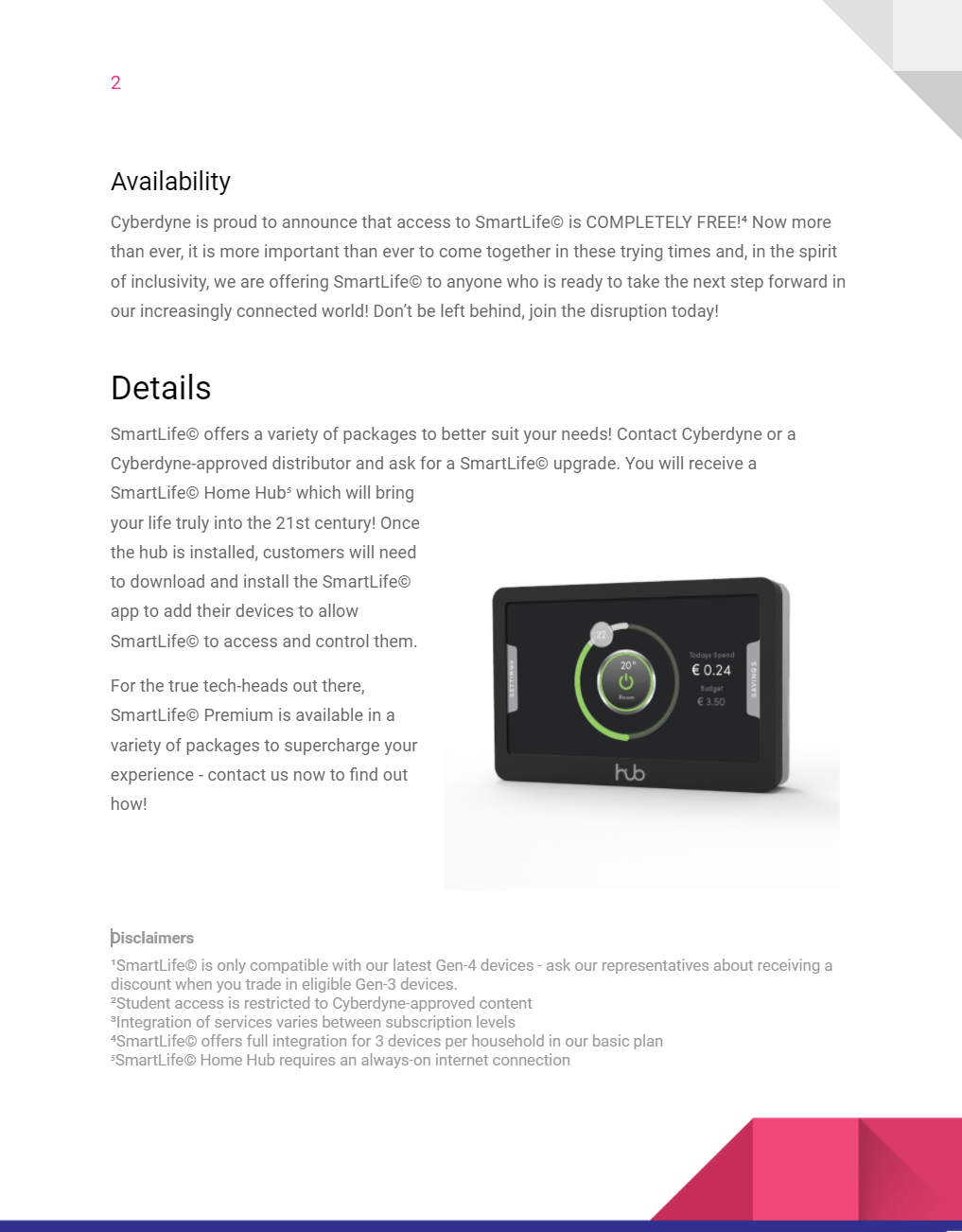Task Reflection
I wanted to create two narratives of a seemingly wonder-product that reflected the increasingly pervasive “pay-to-play” mentality most digital services have. To that end I imagined a company marketing its total integration smart hub to control Internet of Things devices as well as combine a variety of digital resources into education (similar to the Google Apps for Education suite I use in Abbotsford). The narratives play out through the company’s portrayal of their service contrasted with two individuals who are experiencing the service through a restricted “free” service and a privileged individual with access to the “premium” features. I was partially inspired by the Black Mirror episode Fifteen Million Merits where ads have invaded the privacy of everyday activities in the “home” as well as the phenomenon of social credit in China where specific sets of society are granted privileges above and beyond their fellow citizens. I feel these two frameworks combined well with the tendency most businesses have when providing “free” apps to remove functionality and place it behind a paywall/subscription. This practice is certainly understandable as they need to make money somehow but can be frustrating when they revisit an app or service and begin placing additional restrictions on the free access to pressure users into subscribing to the paid model.
An example I have personally experienced was with EverNote which restricted free access to 2 devices only which meant I could no longer access my lesson plans on my school laptop, home computer, and cell phone. I felt this matched Dune and Raby’s instruction that “[a] believable series of events that led to the new situation is necessary, even if entirely fictional. This allows viewers to relate the scenario to their own world and to use it as an aid for critical reflection.” (2013, p. 4) I had originally thought about creating narratives centered around Dunne and Raby’s “final cone [that] intersects the probable and plausible. This is the cone of preferable futures.” (2013, p. 4) I was very much intrigued by their inquiry as to who determines what preferable is as they list the primary decision-makers “government and industry, and although we play a role as consumers and voters, it is a limited one.” (Dunne and Raby, 2013, p. 4)
I was hoping to integrate this fictional SmartLife product into more aspects of life but struggled to do so. A thought I had was inspired by Yuval Hariri speculating that “[w]e will probably have an AI family doctor on our smartphone years before we have a reliable nurse robot.” (2017, p. 325) where I imagined a subscription-based or premium version of a service where, for a monthly fee, you could access an AI doctor with a faster and more sophisticated algorithm that covered a larger range of conditions, etc. It was fun to draw upon the experiences I’ve had with various services and had me reflecting upon the quasi-dark patterns used to initially entice users to websites, services, apps, etc.
References:
Dunne, A. & Raby, F. (2013). Speculative Everything: Design, Fiction, and Social Dreaming. Cambridge: The MIT Press. Retrieved August 30, 2019, from Project MUSE database.
Hariri, Y. N. (2017). Reboot for the AI revolution. Nature International Weekly Journal of Science, 550(7676), 324-327.
Star rating 1 of 5. [Digital Image]. (2016) Retrieved from https://commons.wikimedia.org/wiki/File:Star_rating_1_of_5.png
Star rating 5 of 5. [Digital Image]. (2016) Retrieved from https://commons.wikimedia.org/wiki/File:Star_rating_5_of_5.png



